Codex Washingtonianus Contains A Passage Not Seen In Any Other Biblical Manuscript
Ellen Lloyd - AncientPages.com - The Codex Washingtonianus is the world's third oldest Bible, and it is at the Smithsonian's Freer Gallery of Art.
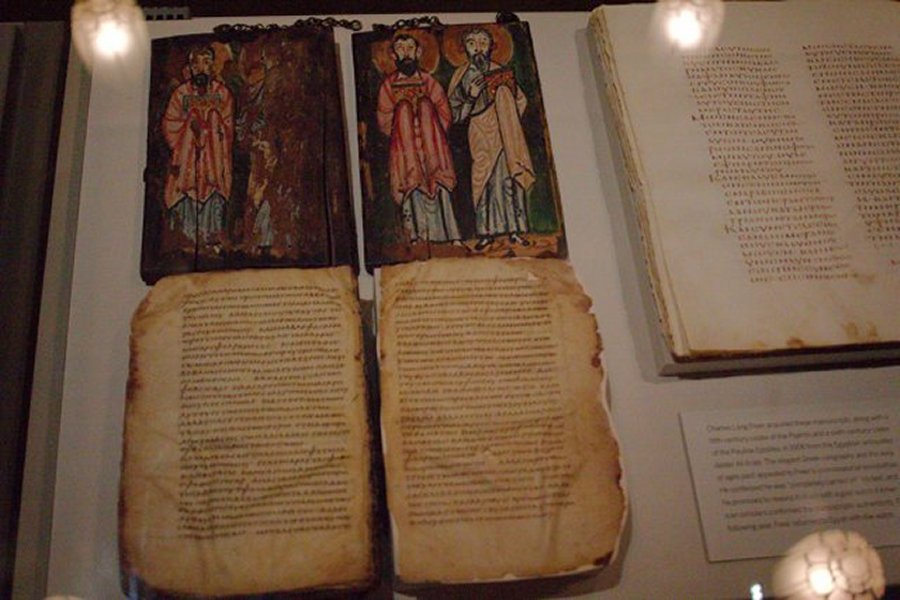 Codex Washingtonianus is the world’s third oldest Bible. Author: Two scribes. Language: Greek, 4th-5th century.
Codex Washingtonianus is the world’s third oldest Bible. Author: Two scribes. Language: Greek, 4th-5th century.
It comprises the four Gospels in the so-called Western order (Matthew, John, Luke, and Mark, as Dea).
It was acquired in Egypt by C.L. Freer, an American businessman and philanthropist (hence, the Freer-Gospels), in 1906 and is now in the Freer Gallery of Art of the Smithsonian Institution in Washington, D.C. Codex Washingtonianus is a 4th–5th-century manuscript probably copied from several different manuscripts.
This priceless ancient book is heavily guarded and rarely makes public appearances. The last time it was on display was in February 2014, when curators showed the document in the Freer Gallery's Victorian Peacock Room, along with a second of four ancient manuscripts purchased by Freer, the museum's founder. The two remaining manuscripts are too delicate or damaged and cannot be put on display.
The Bible has a painted wooden cover, with almost 200 parchment pages, and is reportedly over 1,500 years old.
It features the four Gospels in Greek and is known as the "Codex Washingtonianus," or the "Washington Gospels."
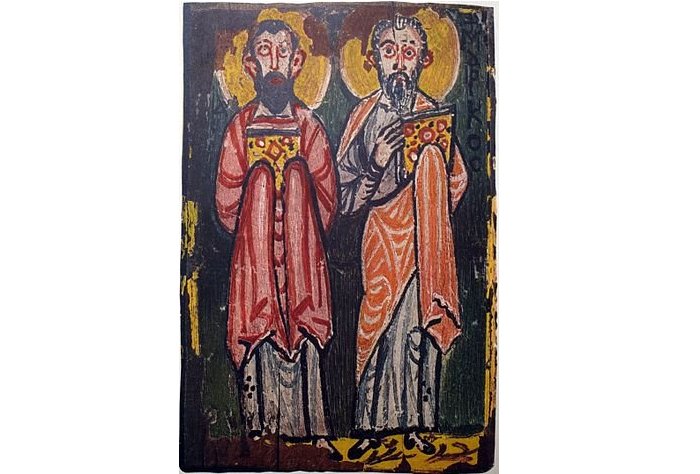 Painted cover of the Codex Washingtonianus, depicting the evangelists Luke and Mark (7th century).
Painted cover of the Codex Washingtonianus, depicting the evangelists Luke and Mark (7th century).
The gallery said Freer purchased the manuscripts in 1906 in Giza, Egypt, and later organized and underwrote significant early biblical scholarship.
The pages are sensitive to light and humidity, so the codex never leaves the museum and isn't exhibited very often.
According to Craig Evans, a biblical scholar at Acadia University in Nova Scotia, only two other complete Gospels texts —Matthew, Mark, Luke, and John—are older than the Codex Washingtonians. They are the Codex Vaticanus, which is held at the Vatican, and the Codex Sinaiticus, which is usually held at the British Library in London.
When the Codex Washingtonianus was first published publicly in 1912, it caused controversy because it contained an extra passage in the Gospel of Mark.
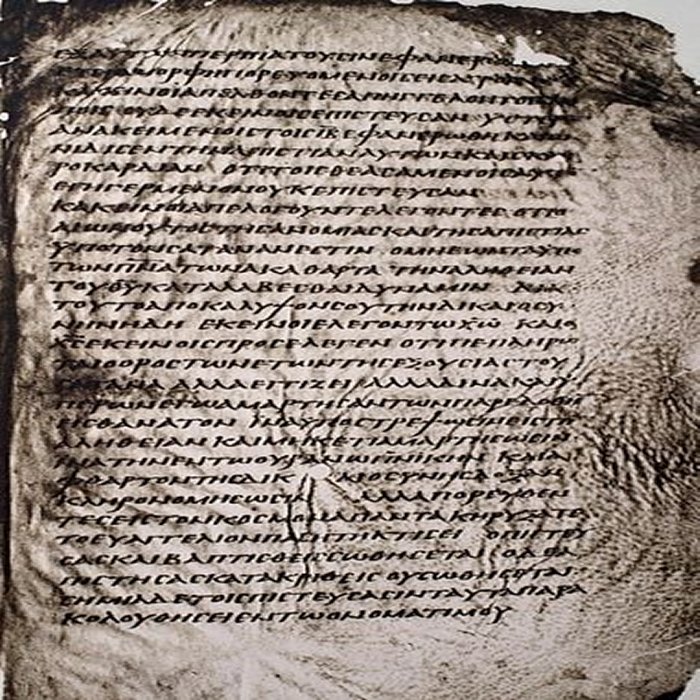 Mark 16:12-17 with the Freer Logion in 16:14. Image credit: Author unknown - Public Domain
Mark 16:12-17 with the Freer Logion in 16:14. Image credit: Author unknown - Public Domain
"While researching their cultural context and physical structure, it was discovered that the Washington Codex contains a passage not found in any other biblical text - a segment at the end of the Gospel of Mark known as the Freer logion (a logion is a saying attributed to Jesus)," the Free gallery said.
A translation of the Freer logion reads: "And Christ replied to them, 'The term of years of Satan's power has been fulfilled, but other terrible things draw near.'"
That passage seemed to address whether God or Satan was in charge, said Bethel University's Holmes.
Evans said that news of the passage at the time came amid rumblings that the King James Version wasn't sufficiently representative of the earliest iteration of the Bible. Conservative Christians were unhappy about that, he added.
So, the publication of the Codex Washingtonianus, with its additional passage attributed to Jesus, caused more consternation because it was another challenge to the Bible that people knew.
He said it's not so much a problem now, but it shook up many people at the time.
The additional passage, referred to as the Freer logion, was probably an oral saying that somehow made its way into the Gospels, said Holmes.
"There's no religious tradition that uses it as part of Scripture," he said. "It's almost like a margin comment that somebody wrote down because they heard it and wanted to remember it, and the scribe worked it in later."
He wasn't particularly religious or attracted to them as sacred texts. Freer purchased the codex partly because he found it mysterious and beautiful.
Written by - Ellen Lloyd – AncientPages.com
Updated on May 20, 2024
Copyright © AncientPages.com All rights reserved. This material may not be published, broadcast, rewritten or redistributed in whole or part without the express written permission of AncientPages.com
More From Ancient Pages
-
 The Enigma Of The ‘Ancient Ones’, The Anasazi Cliff-Dwellers Of The Southwestern United States
Civilizations | Apr 9, 2017
The Enigma Of The ‘Ancient Ones’, The Anasazi Cliff-Dwellers Of The Southwestern United States
Civilizations | Apr 9, 2017 -
 Beethoven’s Genome Offers Clues To Composer’s Health And Family History
DNA | Mar 27, 2023
Beethoven’s Genome Offers Clues To Composer’s Health And Family History
DNA | Mar 27, 2023 -
 Calçoene – Amazon Stonehenge And The Mysterious Amapán Megalithic Culture
Civilizations | Feb 14, 2018
Calçoene – Amazon Stonehenge And The Mysterious Amapán Megalithic Culture
Civilizations | Feb 14, 2018 -
 8,000-Year-Old House Remains Discovered In Svinjarička Čuka, Serbia Raise Questions About Europe’s First Farmers
Archaeology | Oct 21, 2024
8,000-Year-Old House Remains Discovered In Svinjarička Čuka, Serbia Raise Questions About Europe’s First Farmers
Archaeology | Oct 21, 2024 -
 Stunning Images Of Shackleton’s Lost Ship Endurance Discovered Off The Coast Of Antarctica
Archaeology | Mar 9, 2022
Stunning Images Of Shackleton’s Lost Ship Endurance Discovered Off The Coast Of Antarctica
Archaeology | Mar 9, 2022 -
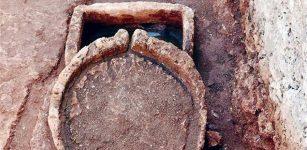 Oldest Olive Oil Press Facilities Owned By Mysterious Woman ‘Arete’ Unearthed In Antalya, Turkey
Archaeology | Apr 2, 2017
Oldest Olive Oil Press Facilities Owned By Mysterious Woman ‘Arete’ Unearthed In Antalya, Turkey
Archaeology | Apr 2, 2017 -
 Why Were The 4,000-Year-Old Native American Shell Ring Villages Suddenly Abandoned?
Archaeology | Mar 3, 2022
Why Were The 4,000-Year-Old Native American Shell Ring Villages Suddenly Abandoned?
Archaeology | Mar 3, 2022 -
 Subterranean Kingdom Of Shahmaran And The Land Of The Snakes
Featured Stories | Aug 17, 2020
Subterranean Kingdom Of Shahmaran And The Land Of The Snakes
Featured Stories | Aug 17, 2020 -
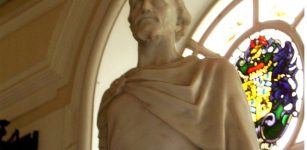 Owain Glyndwr: Famous Medieval Welsh Warrior Prince And Symbol Of Independence
Featured Stories | Jun 20, 2018
Owain Glyndwr: Famous Medieval Welsh Warrior Prince And Symbol Of Independence
Featured Stories | Jun 20, 2018 -
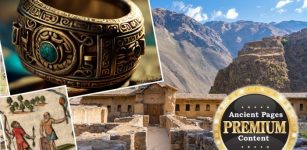 Discovery Of An Unusually Large Ancient Artifact May Confirm Powerful Myth Of A Mysterious Race
Featured Stories | Oct 8, 2024
Discovery Of An Unusually Large Ancient Artifact May Confirm Powerful Myth Of A Mysterious Race
Featured Stories | Oct 8, 2024 -
 Europe’s Earliest Culture Of Aurignacian People Made Amazing Images With Dots
Archaeology | Mar 5, 2017
Europe’s Earliest Culture Of Aurignacian People Made Amazing Images With Dots
Archaeology | Mar 5, 2017 -
 Mystery Of Egyptian Queen Hetepheres I’s Bracelets Solved!
Archaeology | Jun 2, 2023
Mystery Of Egyptian Queen Hetepheres I’s Bracelets Solved!
Archaeology | Jun 2, 2023 -
 Mysterious Headless Skeleton May Be Sir George Yeardley – The Man Who Shaped Early America
Archaeology | Aug 11, 2018
Mysterious Headless Skeleton May Be Sir George Yeardley – The Man Who Shaped Early America
Archaeology | Aug 11, 2018 -
 Human Body Has Gone Through Four Stages Of Evolution – New Study
Human Beginnings | Sep 1, 2015
Human Body Has Gone Through Four Stages Of Evolution – New Study
Human Beginnings | Sep 1, 2015 -
 Edøy Discovery: Traces Of 1,000-Year-Old Ship Burial Detected In Norway
Archaeology | Nov 24, 2019
Edøy Discovery: Traces Of 1,000-Year-Old Ship Burial Detected In Norway
Archaeology | Nov 24, 2019 -
 A New Historical Inscription Of Sargon II From Karkemish Examined
Archaeology | Apr 22, 2019
A New Historical Inscription Of Sargon II From Karkemish Examined
Archaeology | Apr 22, 2019 -
 Ancient Egyptian Knowledge Of The Cosmic Engine And Unseen God Of The Universe
Featured Stories | Jan 15, 2019
Ancient Egyptian Knowledge Of The Cosmic Engine And Unseen God Of The Universe
Featured Stories | Jan 15, 2019 -
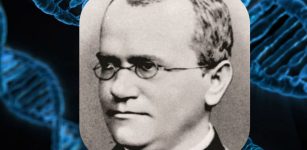 Evidence Mendel Discovered The Laws Of Inheritance Decades Ahead Of His Time
Archaeology | Jul 12, 2022
Evidence Mendel Discovered The Laws Of Inheritance Decades Ahead Of His Time
Archaeology | Jul 12, 2022 -
 Legend Of The Eight Immortals Who Know The Secrets Of Nature
Chinese Mythology | May 21, 2016
Legend Of The Eight Immortals Who Know The Secrets Of Nature
Chinese Mythology | May 21, 2016 -
 Hephaestus (Hephaistos) – God Of Fire And Master Craftsman Constructed Talos, First Greek Robot And Divine Weapons Of The Gods
Featured Stories | Jul 7, 2018
Hephaestus (Hephaistos) – God Of Fire And Master Craftsman Constructed Talos, First Greek Robot And Divine Weapons Of The Gods
Featured Stories | Jul 7, 2018
